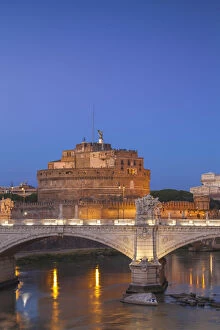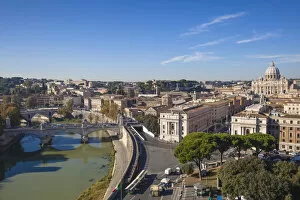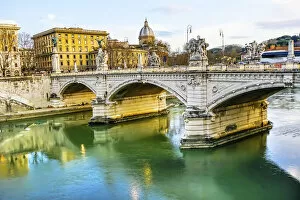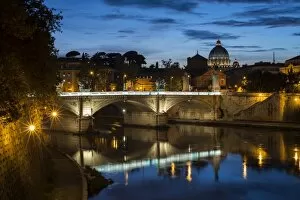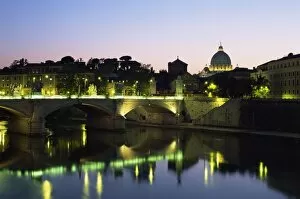Ponte Vittorio Emanuele Ii Collection
"Ponte Vittorio Emanuele II: A Majestic Link to Rome's Historic Beauty" Nestled in the heart of Italy's Lazio region
For sale as Licensed Images
Choose your image, Select your licence and Download the media
"Ponte Vittorio Emanuele II: A Majestic Link to Rome's Historic Beauty" Nestled in the heart of Italy's Lazio region, the Ponte Vittorio Emanuele II stands as a testament to Rome's rich history and architectural grandeur. This iconic bridge spans across the majestic River Tiber, connecting various parts of this ancient city. As you stroll along its elegant structure, breathtaking views unfold before your eyes. From one vantage point, you can witness the magnificent silhouette of St. Peter's Basilica against the backdrop of this picturesque bridge. The dome of the basilica seems to reach for the heavens, creating an awe-inspiring sight that captures both religious devotion and artistic brilliance. Another perspective offers a glimpse into Roman history itself. With Castle Sant'Angelo standing proudly nearby, it is impossible not to be transported back in time. As you admire this view from Ponte Vittorio Emanuele II, you can almost envision emperors and gladiators crossing these very waters centuries ago. The reflection on the tranquil surface of the Tiber River adds another layer of beauty to this already enchanting scene. It mirrors not only nature's serenity but also showcases how seamlessly modernity blends with antiquity in Rome. One cannot help but notice a Roman statue gracing Ponte Vittorio Emanuele II—a reminder that even amidst progress and change, echoes of ancient civilizations continue to resonate throughout this eternal city. At dusk, when golden hues paint the sky above Janiculum Hill and Castel Sant'Angelo casts long shadows upon its surroundings, Ponte Vittorio Emanuele II becomes even more captivating. The river below shimmers under fading sunlight while whispers of history fill every corner. This bridge serves as more than just a means for transportation; it symbolizes unity between different parts of Rome—past and present—and invites visitors from all over the world to immerse themselves in its timeless beauty.

